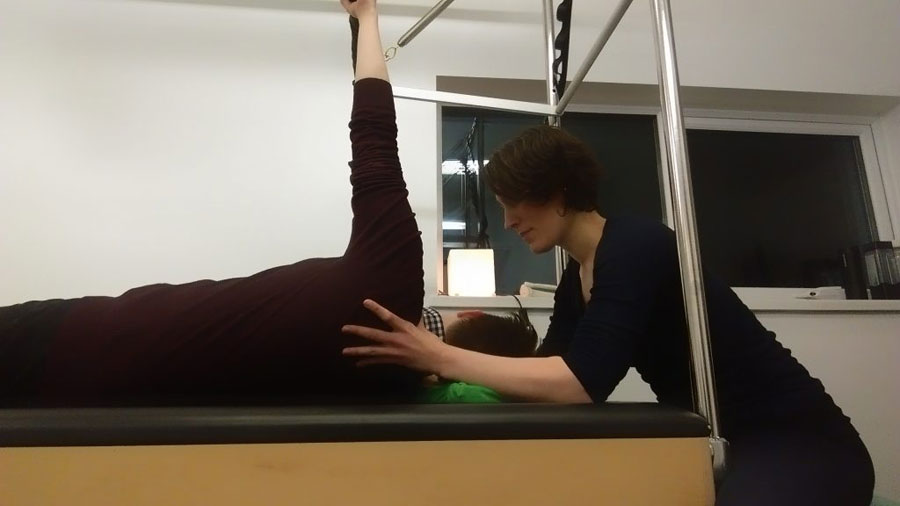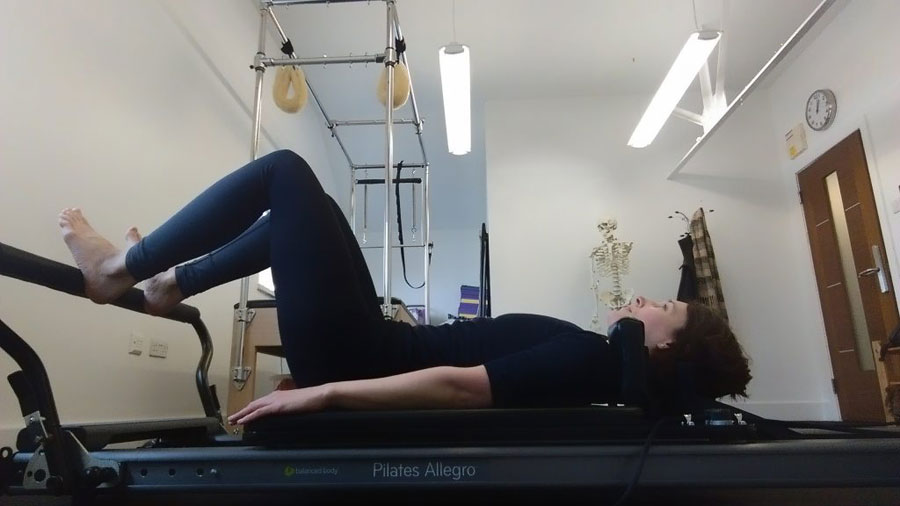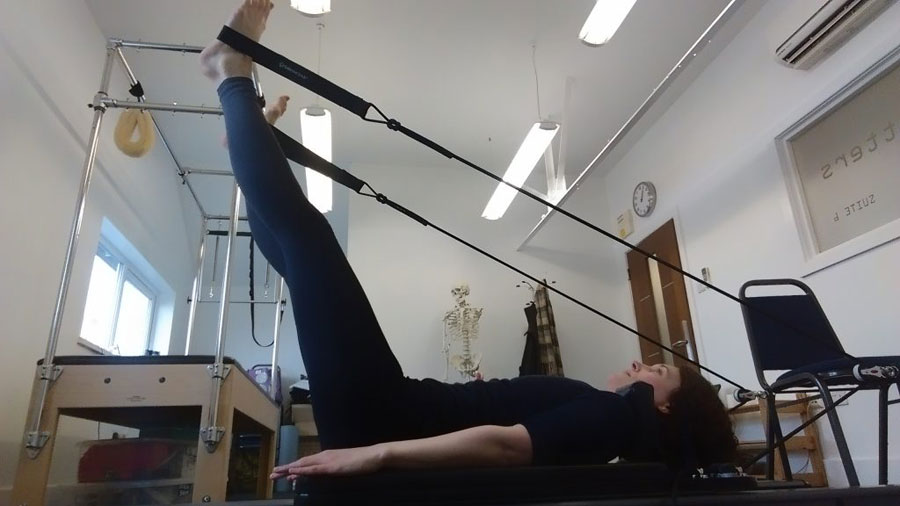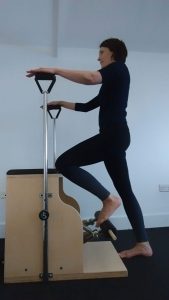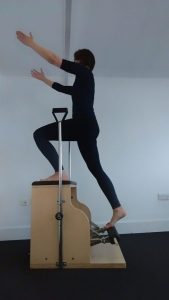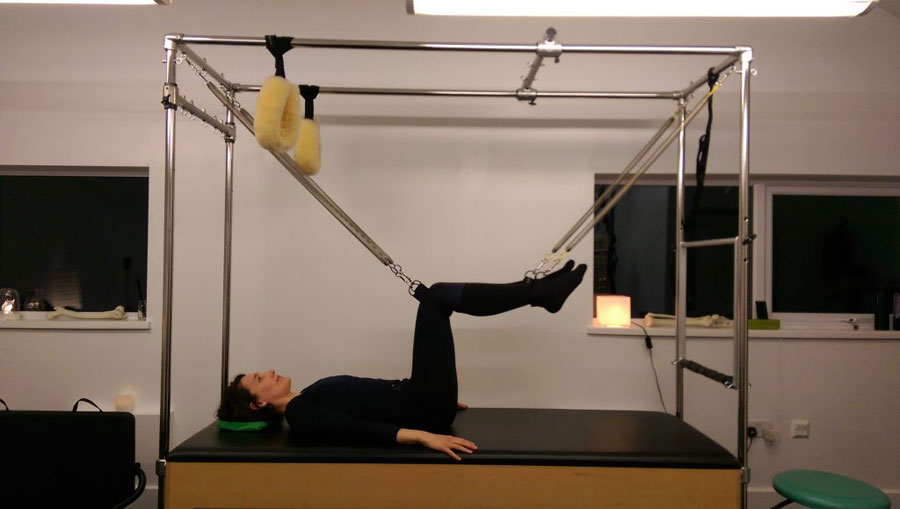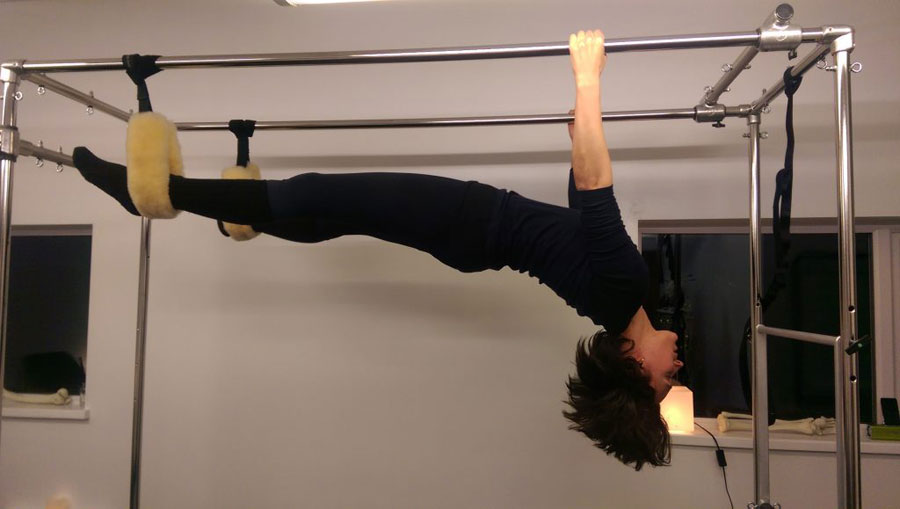6 Benefits Of 1:1 Pilates With The Pilates Apparatus
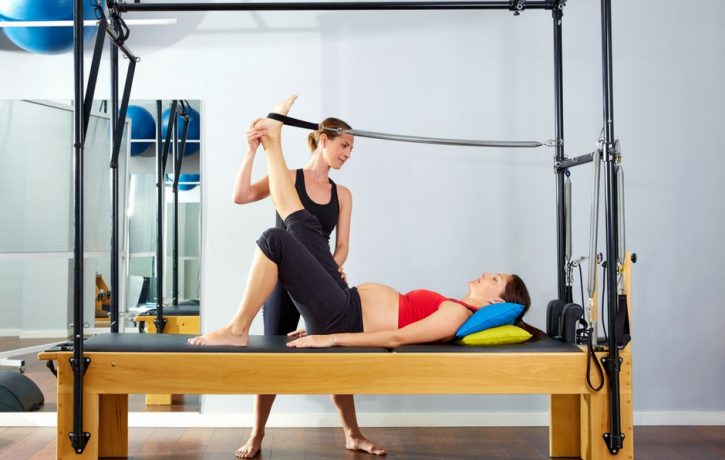
Since the 1990ies Pilates has become increasingly popular. Many of us try out Pilates at some point in our lives for various reasons, such as wanting to eliminate pain, seeking a low impact, mindful fitness class or wanting to improve sporting performance or posture. Most of us end up in a mixed ability mat work class, as this tends to be the most available option. Many people do not even know that Pilates was traditionally practised in a 1:1 setting on large machines.
Mat classes are great when you just want to take some time out regularly to focus on your body, learn to move better and feel generally stronger, more flexible and positive. Practising Pilates 1:1 on the reformer, trapeze table, combo chair, ladder barrel and spine corrector is an entirely different experience with very different benefits.
#1 It’s All About You!
A 1:1 Pilates session evolves around you and your individual limitations and goals. You have undivided attention and support, so you know everything you do in that session is relevant to your specific needs and you are doing everything right. You are in constant dialog with your practitioner as you go through the exercises. There is no judgement or comparison with what other people should do, or may be able to do. The only thing that matters is you. Just think about what a physiotherapy group treatment would be like compared to your private treatment plan. With Pilates it is no different.
While Pilates can be used as a workout, it is first and foremost a therapy that teaches you the fundamentals of efficient, natural and healthy movement. Just like talking therapies and physical therapies Pilates is all about making very individual changes, such as eliminating your pain, rehabilitating your injury, changing your individual movement patterns and identifying barriers to change, and if needed, their causes. These barriers and causes can be biomechanical as well as environmental or behavioural. In order to identify and address all these individual factors a private 1:1 setting is needed.
#2 Hands-On Therapeutic Support
As mentioned above, Pilates is a form of therapy. In a 1:1 setting the practitioner is able to support you with manual skills, that would be limited in a group setting.
David Lesondak, the author of the book “Fascia: What It Is And Why It Matters” is one of many successful Physical Therapists, who has said that manual therapy, combined with active movement by the client tends to be more effective than manual therapy alone. In a 1:1 Pilates setting the practitioner can support and guide you with tactile cueing during your exercises. The trapeze table also offers a comfortable and suitable platform for short, targeted massage and manual therapy treatments with and without active movement.
#3 Movement Support
Not only the practitioner gives guidance and support in the session. The apparatus itself was originally designed to support clients in their rehabilitation from injury. The Polestar Pilates method, developed by Dr Brent Anderson and Feldenkrais Practitioner Elizabeth Larkam, strongly believes in working out smarter rather than harder. Changing our subconscious, inefficient movement strategies and getting out of faulty movement patterns that cause wear and tear is a big part of this.
This means, rather than making you struggle with a difficult movement we may instead put you in a different orientation to gravity. This is what the Pilates apparatus does best. If you struggle with squatting (getting up and down from a chair), the reformer enables you to improve your squatting pattern while lying down, which means you are in a more supportive orientation to gravity. This way we do not only form a supportive environment, where change is easier to facilitate, we are also turning the squat into something the brain does not recognise as the same thing. Therefore it is much easier to break with movement habits and learn new strategies that are more efficient and healthy.
#4 Improved Proprioception
As we get older it is not only important to maintain muscle strength and mobility. The more linear and repetitive our everyday movements become, the more we loose our ability for coordination and balance. Both of these are very important for our movement health and for maintaining comfortable and save movement quality in later years. We may be very good in walking forward and standing up from a chair. However if one day we suddenly have to jump out of the way of a cyclist, or we trip and need to catch ourselves, our brain and body may be very poor at managing this sudden different movement and we could injure ourselves.
Our brain’s understanding of where we are in space and what kind of physical reaction is required in any given situation is called proprioception. The more diverse movement experiences we have the better our proprioception becomes.
The Pilates apparatus offers a movement experience that often does not feel like anything else we have done in our life. For example during the basic reformer exercise “Feet in Straps” you lie on your back, on a moving carriage. Your feet reach into loops attached to ropes. As you start circling the legs in the air you begin to move the carriage backwards and forwards. While the exercise helps with hip mobility, rehab and core stabilisation, our brain gets flooded and enriched with lots of new information about our body and its movement capabilities. Through this we improve our motor control and proprioception, while using many tiny stabilising muscles we did not even know we had.
#5 Rehabilitation From Head To Toe
Some people think that Pilates only deals with the rehabilitation and maintenance of spinal health. However the Pilates apparatus offers a vast repertoire of exercises focused on the rehabilitation and movement quality of other areas of the body too. For example the combo chair is ideal for the purpose of working on ankle stability and mobility as well as hip, knee to ankle alignment.
Sometimes, when we had an injury we feel we can not go to our Pilates or Yoga class, because most of the exercises may not be suitable for us in that moment. However there is no need to just stop and wait until things get better. 1:1 Pilates can always offer you something that will help with your recovery. Even when you can barely move. The trapeze table can take on the role of a sling table for example, a tool that is used in rehabilitation hospitals to assist in the early stages of rehab after hip and knee operations. The client lies on their back and has their legs elevated and completely supported by springs. Unlike the sling table however, the trapeze table allows the practitioner to easily move your legs to start the process of bringing movement back into the affected part of the body. You then can also start gradually taking over the movement of your legs while suspended and supported by the springs. This can be an incredibly relaxing experience both mentally and locally at the joint.
#6 It’s Fun!
Let’s not forget that moving should be fun! The apparatus offers opportunities to explore exciting and joyful ways of working with the body. One of them is “Jumping” on the reformer. In this exercise you are lying down and jumping against a vertical board with far less than your body weight, making you feel like you are jumping on the moon. The trapeze table has a very stable frame that allows you to suspend yourself from your ankles and explore functional strength by pulling yourself up and climbing around as you perhaps used to do on the monkey bars back in the day.
Pilates group classes can be a great place to improve your physical and mental well being. However it is useful to know that 1:1 Pilates is not a mere luxury choice, but that it offers some very different benefits beyond the mat class experience and that sometimes it may be the more appropriate choice for your goals.
If you would like to experience Pilates and its rehabilitation, holistic or therapeutic benefits in a 1:1 setting with the support of the Pilates apparatus you can discuss your case with Kristin at The Body Matters on 01702 714968.
- The Thing About Mixed Feelings Is… - 4th June 2023
- Overthinkers – Here Is What You Really Need To Know - 28th April 2023
- Why Emotions Can Be Overwhelming - 13th December 2022
